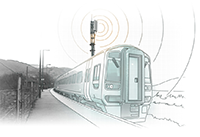|
 After intense negotiations, the European Parliament approved the technical pillar of the fourth railway package on 28 April 2016. This decision set a milestone for the European railway sector in general and for the European Railway Agency (ERA) in particular. The technical pillar of the fourth railway package is designed to reduce the obstacles that differing national standards and procedures create for rail operators and rolling stock manufacturers in Europe. The ERA will play a central role in this process as it will have the power to issue vehicle authorizations and safety certifications, hastening procedures for railway manufacturers and operators. After intense negotiations, the European Parliament approved the technical pillar of the fourth railway package on 28 April 2016. This decision set a milestone for the European railway sector in general and for the European Railway Agency (ERA) in particular. The technical pillar of the fourth railway package is designed to reduce the obstacles that differing national standards and procedures create for rail operators and rolling stock manufacturers in Europe. The ERA will play a central role in this process as it will have the power to issue vehicle authorizations and safety certifications, hastening procedures for railway manufacturers and operators.
Procedural costs for a locomotive marketing authorization can account for up to 10% of its expenditures. Authorizing new rolling stock can take up to two years under the current legislative framework. By simplifying and accelerating those processes, the ERA will contribute to boosting the competitiveness of the European rail sector and create a lean, regulatory framework for the single European railway area, which will provide customers with quality products and competitive prices. A central tenet of the Europeanization of the regulatory framework is a one-stop-shop for applications, an information and communication system, which will function as a single entry point for all applications for safety certification and market vehicle authorization. The ERA will also be able to better ensure the seamless development of control and command systems because it will be able to assess the technical solutions foreseen in any call for tenders published by the European Rail Traffic Management System (ERTMS) for the supply of track-side equipment. The agreement also provides for further harmonization of technical standards. Last but not least, the new regulation for the railway agency came with the ERA name changed to the European Union Agency for Railways.
Full article: IEEE Vehicular Technology Magazine, Volume 11, Number 3, September 2016 |